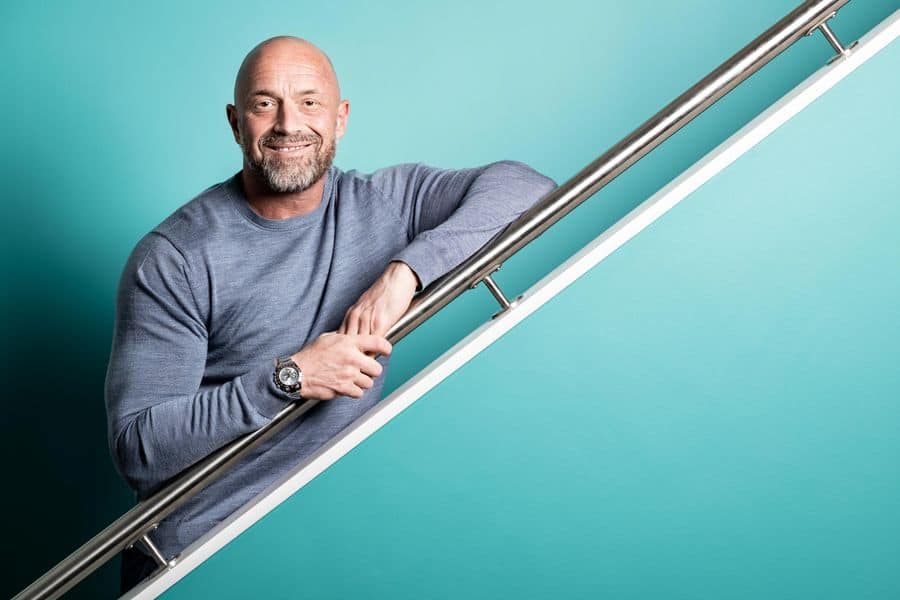EXCLUSIVE: DHG CEO on why innovation will ultimately transform healthcare
There are few sectors which have avoided the staffing problems currently overwhelming the UK. From nursing, to hospitality, to HGV and logistics, all markets are facing dreadful shortages, which seem to have arrived like tsunamis and appear disconcertingly difficult to resolve.
Of course, there are arguments both ways in terms of how prepared we were as a country for such dilemmas.
Some will argue the issues have sprung up suddenly and without notice, while others will say we were forewarned of the problems years ago during the referendum debates (although it should be noted that all of today’s economic problems have been exacerbated by other factors, not just Brexit).
At DHG, we have spoken widely on the struggles we are having as a result of the logistics and haulage shortages. We have been structured and prepared enough as a business to ensure our supplies have not been dramatically affected, however our issues are being felt in terms of delivery to our care providers.
We are acutely aware of the impact these shortages are having, not just on us, but across the healthcare sector, and it’s frustrating to know our products are ready to go, but are not being delivered to those who need them most.
Staff shortages in social care
Another area we have been monitoring closely are the staff shortages in the social care sector. Reports now suggest there are now more unfilled care jobs than before the pandemic, with care companies forced to turn down work supporting patients as they move from hospital back to their own homes or care homes.
NHS Providers, which represents health service trusts, described the issue as ‘dire’ just last month, while the organisation’s deputy chief executive, Saffron Cordery, said the delays are particularly worrying as winter approaches to put extra pressure on services.
Not being able to leave hospital when they are ready can delay a patient’s recovery and rehabilitation, said Cordery, while those waiting for treatment face backlogs.
These delayed discharges have been a constant thorn in the healthcare sector, as the issue of overstretched demand for hospital beds continues to grow. Unless the sector can resolve both staffing, wage and procedural issues, these problems will only continue.
It’s these challenges where we must use innovation to provide solutions.
Our R&D department is integral to us at DHG, and 40 per cent of our revenues stem directly from products we have designed and patented in house.
While there is never ‘a good time’ to launch a product in our sector, we feel particularly humbled to have launched our new remote monitoring surface system, Dyna-Form SMARTresponse, in this time of need.
Finding solutions
Our teams have worked hard to transform our existing award winning hybrid Dyna-Form Mercury Advance surface into a unique smart-monitoring mattress.
Reducing the burden on clinicians and releasing more time to care, the product constantly monitors patient risk even whilst a clinician is not present. This represents a huge benefit during a time where already stretched caregiver coverage is further exacerbated.
The system not only provides pressure redistribution in the non-powered mode, but also automatically steps up to provide pressure relieving alternation when increased risk is sensed. Using the SMARTresponse app, care can be stepped up automatically or remotely, for example after a period of patient non-movement is detected.
It is innovations like these which answer real problems that I’m most proud of. Through our R&D department, we have designed a product which not only supports clinical time pressures and helps those at the front line of our sector through it’s remote capabilities, but simultaneously provides care to the same level for the patient.
Groundbreaking ideas such as the transformation of a mattress into a digitally-led remote monitoring system are inventions that most exemplify how the integration of technology in existing processes and products can result in potentially life-changing solutions and better health outcomes which push the sector forward.
Looking ahead
This product was designed long before Covid, and this is perhaps the most important fact of all. We weren’t to know that a pandemic would shift time pressures for carers to unprecedented levels, or that staff shortages would mean the digitalisation of our sector, whether that be through GP appointments or remote pressure ulcer monitoring, but it’s this scenario forecasting which is most important in our healthcare sector.
By looking 5-10 years ahead, we can begin to see fragments of what might occur, or where pressures in the system might start to cause cracks.
It can be a daunting task to forecast problems and ask ourselves ‘how will our sector be struggling in five years’ time?’ but by thinking about the realistic projections of where healthcare will be, we will be in a better place to help improve situations when the time arises.
https://thiis.co.uk/exclusive-dhg-ceo-on-why-innovation-will-ultimately-transform-healthcare/https://thiis.co.uk/wp-content/uploads/2021/08/Graham-Ewart-CEO-2.jpghttps://thiis.co.uk/wp-content/uploads/2021/08/Graham-Ewart-CEO-2-150x150.jpgAnalysis & InsightsNewsroomNHSOpinions & CommentsSector NewsDHG,digitalisation,healthcare,innovation,Pressure Care,social care,staffingThere are few sectors which have avoided the staffing problems currently overwhelming the UK. From nursing, to hospitality, to HGV and logistics, all markets are facing dreadful shortages, which seem to have arrived like tsunamis and appear disconcertingly difficult to resolve. Of course, there are arguments both ways in terms...Liane McIvorLiane McIvorliane@thiis.co.ukEditorTHIIS Magazine


